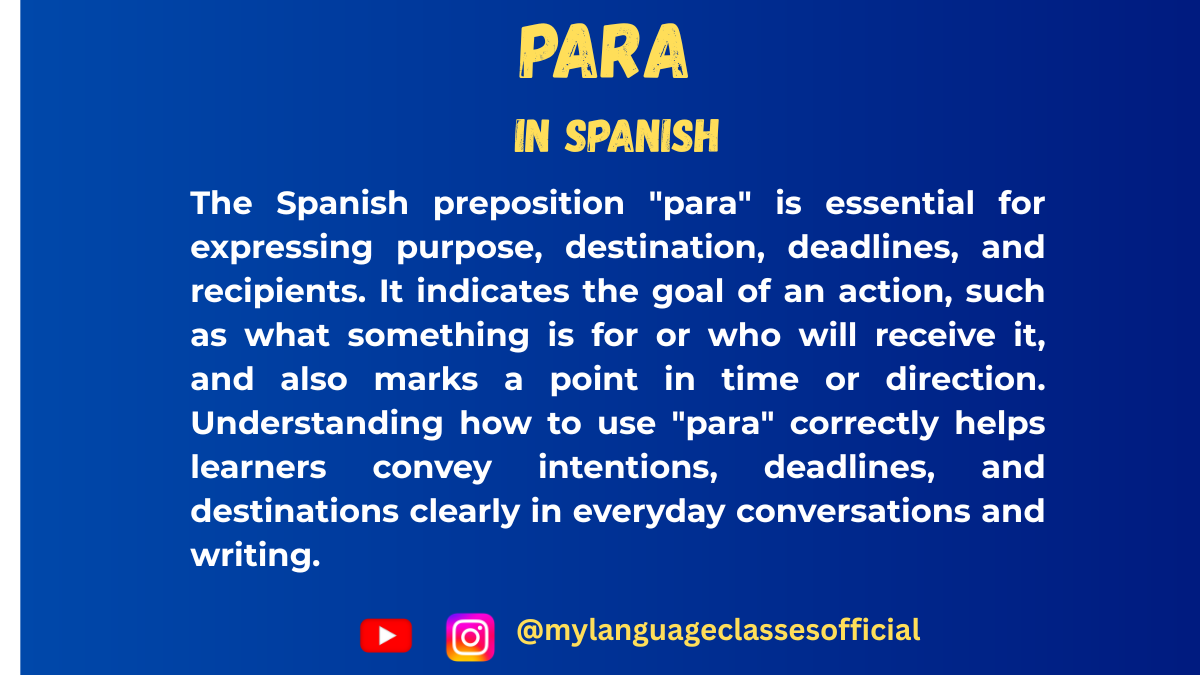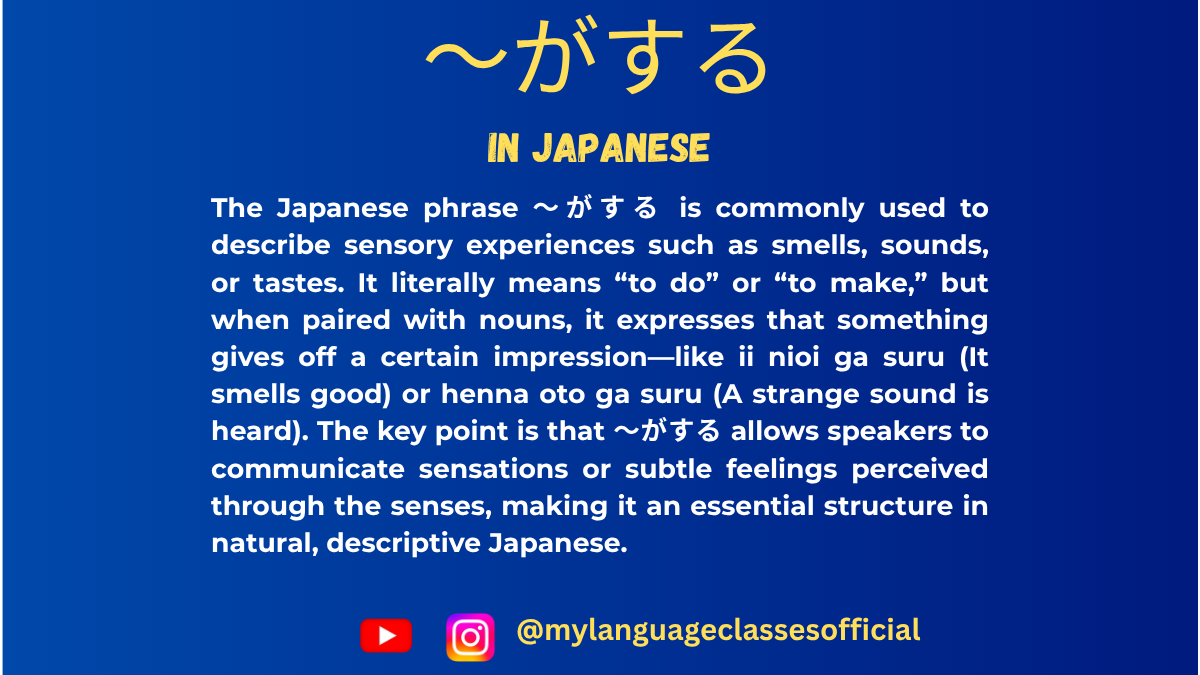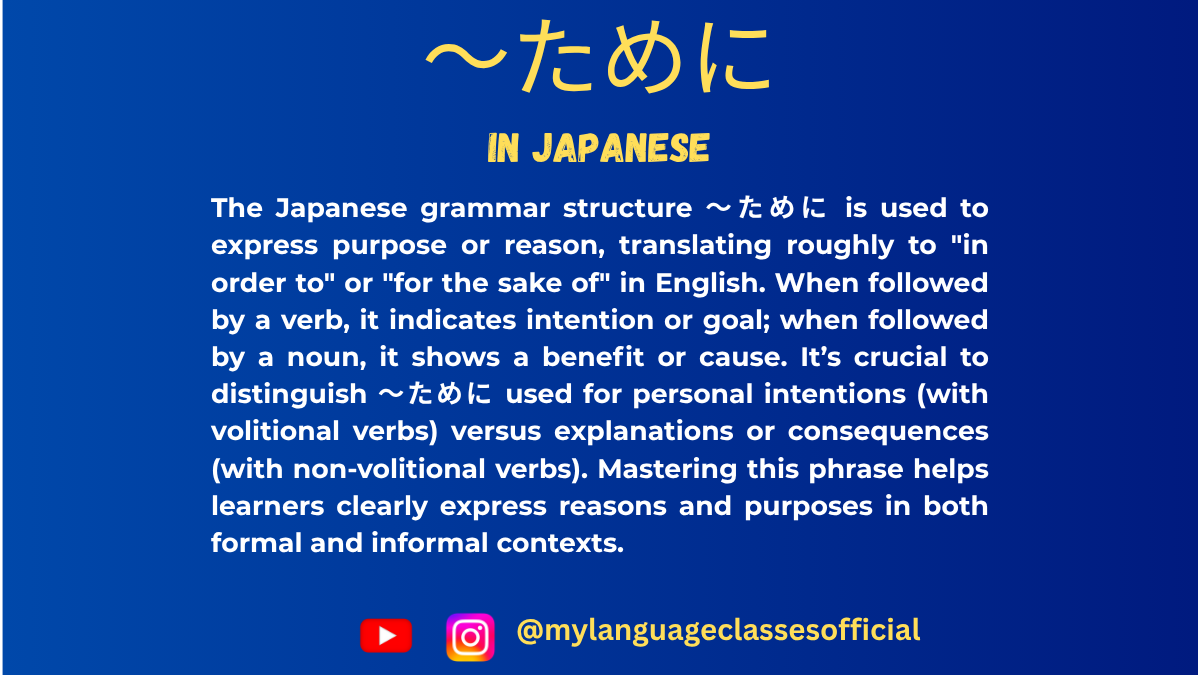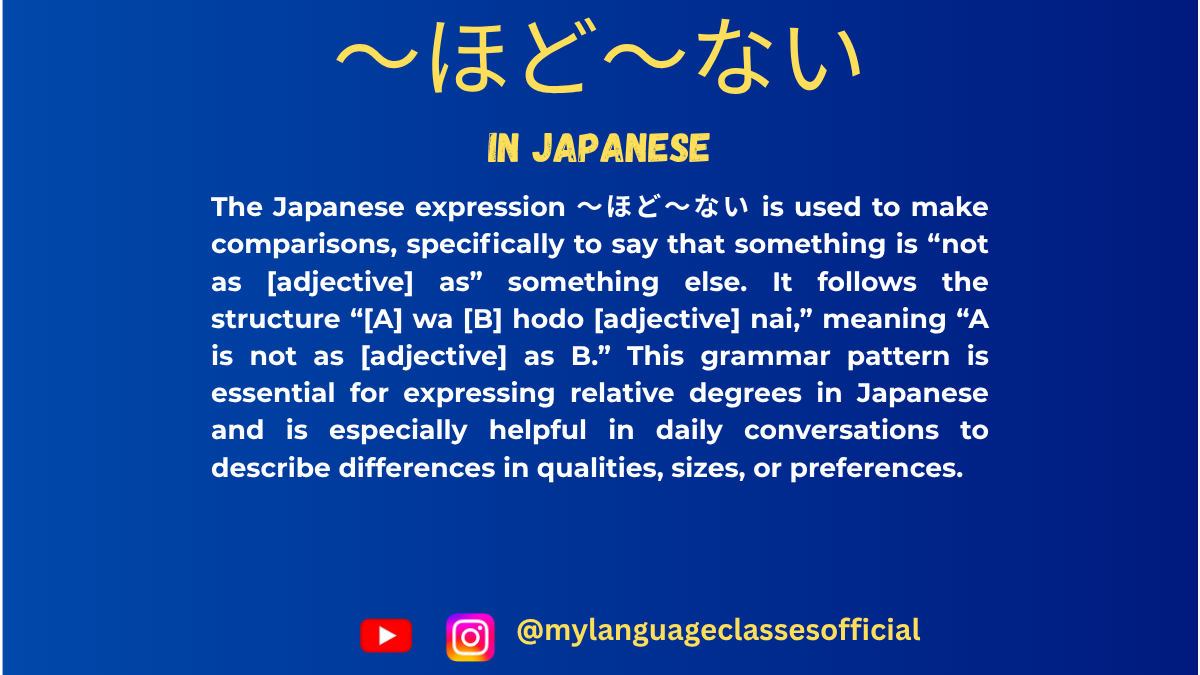Your cart is currently empty!
Tag: Japanese linguistic patterns
-

Everything You Need to Know About PARA in Spanish
When learning Spanish, one of the trickiest aspects is understanding the difference between “por” and “para.” While both can translate to “for” in English, they serve different purposes in Spanish. This article will focus on “para”—its uses, common expressions, and grammatical rules.
Uses of PARA in Spanish
“Para” is generally used to indicate purpose, destination, deadlines, recipients, and opinions. Below is a detailed explanation of its main uses:
Usage Explanation Example Sentence Purpose (In order to) Used to indicate the reason for doing something. Often translates to “in order to” in English. Estudio español para hablar con fluidez. (I study Spanish in order to speak fluently.) Recipient (For someone) Used when something is intended for a person or entity. Este regalo es para ti. (This gift is for you.) Destination (Towards a place) Indicates movement towards a destination. Salimos para Madrid mañana. (We are leaving for Madrid tomorrow.) Deadline (By, For a time limit) Used to indicate a deadline for an action. La tarea es para mañana. (The homework is for tomorrow.) Employment (To work for someone) Indicates employment or who you work for. Trabajo para una empresa grande. (I work for a big company.) Comparison (Considering that) Used when making a comparison or contrast. Para un niño de 5 años, él es muy alto. (For a five-year-old, he is very tall.) Opinion (According to someone) Used to express personal opinions. Para mí, este restaurante es el mejor. (For me, this restaurant is the best.) Use (For a specific use) Used when indicating the purpose of an object. Necesito un cepillo para el pelo. (I need a brush for my hair.)
Common Expressions with PARA
Below is a list of commonly used phrases and idioms with para in daily Spanish:
Expression Meaning Example Sentence Estar para + infinitive To be about to do something Estoy para salir. (I am about to leave.) Para siempre Forever Te amaré para siempre. (I will love you forever.) Para nada Not at all No me gusta el café para nada. (I don’t like coffee at all.) Para variar Just for a change Hoy vamos a la playa para variar. (Today we are going to the beach just for a change.) No es para tanto It’s not a big deal No llores, no es para tanto. (Don’t cry, it’s not a big deal.) Para colmo To top it all off Perdimos el tren y, para colmo, empezó a llover. (We missed the train, and to top it all off, it started raining.) Para que (+ subjunctive) So that Estudia mucho para que pases el examen. (Study hard so that you pass the exam.) Ser tal para cual To be two of a kind Juan y Ana son tal para cual. (Juan and Ana are two of a kind.)
Important Grammar Rules When Using PARA
1. Articles with PARA
- When using para before a noun, it may require a definite or indefinite article (el, la, los, las, un, una, unos, unas).
- Example: Este libro es para el profesor. (This book is for the teacher.)
2. Singular vs. Plural Forms
- “Para” itself does not change with gender or number, but the words following it do.
- Example: Las flores son para las madres. (The flowers are for the mothers.)
3. Using PARA with Pronouns
- Personal pronouns with “para”: para mí, para ti, para él/ella, para nosotros, para ellos.
- Example: Este mensaje es para ti. (This message is for you.)
4. PARA vs. POR
Since “por” and “para” both mean “for” in English, beginners often confuse them. Here’s a simple trick:
- Use PARA when there’s a destination or purpose. (Voy para Madrid.)
- Use POR when there’s a cause or reason. (Voy por el trabajo.)
Things to Keep in Mind When Using PARA
- If you are expressing a purpose (“in order to”), always use the infinitive verb form after “para.”
✅ Vine para aprender español. (I came to learn Spanish.)
❌ Vine para aprendo español. (Incorrect) - “Para” is not used when talking about duration—use “por” instead.
✅ Estudié por dos horas. (I studied for two hours.)
❌ Estudié para dos horas. (Incorrect) - In spoken Spanish, native speakers often use “para” with shortened forms like “pa’” in informal speech.
Example: Voy pa’ la casa. (I’m going home.) (Casual speech)
Final Thoughts
Understanding para is crucial for mastering Spanish. By learning its different uses and practicing with common expressions, you’ll improve both comprehension and fluency. Try to use para in your daily conversations, and pay attention to how native speakers use it!
If you enjoyed this lesson, be sure to check out more posts like this on my blog at My Language Classes. Don’t forget to subscribe my YouTube channel and follow me on Instagram for the latest language learning tips and lessons. Leave a comment below to share your thoughts, or ask any questions you have.
Happy learning! 😊
-

Understanding 〜がする in Japanese | My Language Classes
Understanding the Usage of 〜がする in Japanese
The expression 〜がする is a common grammatical structure in Japanese used to describe perceptions and sensations related to the five senses, as well as intuitive feelings. It is often translated as “to smell,” “to taste,” “to feel,” or “to sound like.” This phrase allows the speaker to express their sensory or emotional experience in a natural way.
Basic Structure of 〜がする
The pattern generally follows this structure:
[Noun] + がする
Here, [Noun] represents something perceived through the senses (such as smell, taste, sound, or feeling). The verb する indicates that the sensation exists.
Situations Where 〜がする is Used
Below are the different contexts where 〜がする is commonly used:
1. Smell (Odor-related Perception)
Used when describing a smell that one perceives.
- 変なにおいがする。 (Henna nioi ga suru.) – “There is a strange smell.”
- 花の香りがする。 (Hana no kaori ga suru.) – “I smell the fragrance of flowers.”
- ガスのにおいがする。 (Gasu no nioi ga suru.) – “It smells like gas.”
2. Taste (Flavor-related Perception)
Used when describing the taste of something.
- 変な味がする。 (Henna aji ga suru.) – “It has a strange taste.”
- この水は鉄の味がする。 (Kono mizu wa tetsu no aji ga suru.) – “This water tastes like iron.”
- 甘い味がする。 (Amai aji ga suru.) – “It tastes sweet.”
3. Sound (Auditory Perception)
Used when describing a sound that one hears.
- ドアの開く音がする。 (Doa no hiraku oto ga suru.) – “I hear the sound of a door opening.”
- 雷の音がする。 (Kaminari no oto ga suru.) – “I hear the sound of thunder.”
- 人の話し声がする。 (Hito no hanashigoe ga suru.) – “I hear people’s voices.”
4. Feeling (Emotional or Intuitive Perception)
Used when describing a feeling, intuition, or an atmosphere.
- 嫌な感じがする。 (Iyana kanji ga suru.) – “I have a bad feeling.”
- 胸騒ぎがする。 (Munasawagi ga suru.) – “I have a premonition (of something bad).”
- ワクワクする感じがする。 (Wakuwaku suru kanji ga suru.) – “I have an exciting feeling.”
5. Physical Sensations (Pain or Bodily Feelings)
Used when describing physical sensations or discomfort.
- 頭が痛い感じがする。 (Atama ga itai kanji ga suru.) – “I feel like I have a headache.”
- 吐き気がする。 (Hakike ga suru.) – “I feel nauseous.”
- 寒気がする。 (Samuke ga suru.) – “I feel chills.”
6. Other Abstract Feelings and Situations
It can be used to describe abstract or indirect experiences.
- あの人は信用できない気がする。 (Ano hito wa shinyou dekinai ki ga suru.) – “I feel like that person is untrustworthy.”
- ここは何か違う感じがする。 (Koko wa nanika chigau kanji ga suru.) – “This place feels different.”
Key Points to Remember
- 〜がする is used to describe sensory experiences, including smell, taste, sound, and physical or emotional feelings.
- It is typically used with nouns related to perception, such as におい (smell), 味 (taste), 音 (sound), 気 (feeling), 感じ (sensation), 痛み (pain), etc.
- It can be used for both literal (real sensory perceptions) and abstract (intuition, atmosphere, emotions) experiences.
- The phrase makes statements subjective, meaning it expresses the speaker’s personal perception rather than an objective fact.
Conclusion
Understanding 〜がする is essential for expressing sensory perceptions naturally in Japanese. Whether you’re describing a delicious meal, a strange smell, an ominous feeling, or an unexpected noise, this structure is an invaluable tool in communication. Mastering its usage will enhance your ability to express experiences vividly and naturally in Japanese.
By practicing various sentence patterns using 〜がする, learners can deepen their understanding and fluency in Japanese conversation. Try using it in your daily observations to get more comfortable with its application!
If you enjoyed this lesson, be sure to check out more posts like this on my blog at My Language Classes. Don’t forget to subscribe my YouTube channel and follow me on Instagram for the latest language learning tips and lessons. Leave a comment below to share your thoughts, or ask any questions you have about nouns.
Happy learning! 😊
-

Using 〜ために in Japanese | My Language Classes
Understanding 〜ために in Japanese
In Japanese, “〜ために” (tame ni) is a highly versatile grammatical structure used to indicate purpose, reason, or benefit. Understanding its different meanings and contexts is crucial for mastering the Japanese language.
This article will explain all the possible uses of “ために” along with example sentences and a list of situations where it is commonly used.
**1. Expressing Purpose (目的)
The most common use of “ために” is to express purpose or intention. In this case, it is used with dictionary form verbs or nouns.**
Structure:
- Verb (dictionary form) + ために
- Noun + の + ために
Examples:
- 体重を減らすために歩いています。 (I walk in order to lose weight.)
- 簡単な日本語を勉強するためにこのアプリを使う。 (I use this app to study simple Japanese.)
- 健康のために毎日ヨガをしています。 (For my health, I do yoga every day.)
Note:
- “ために” is used for intentional actions performed by someone with a goal in mind.
2. Expressing Reason or Cause (原因)
“ために” can also be used to express a reason or cause for a particular event, similar to “because of” in English.
Structure:
- Verb (plain past form) + ために
- Noun + の + ために
Examples:
- 天気が悪かったためにゲームが中止された。 (Because of bad weather, the game was canceled.)
- 病気のために休んだ。 (I took a break because of illness.)
- 仕事が大変だったためにとても疲れています。 (Because work was difficult, I am very tired.)
Note:
- In this case, the outcome is not controlled by the speaker and is often negative.
3. Expressing Benefit or Effect (利益)
Another meaning of “ために” is to indicate the benefit or positive effect of something.
Structure:
- Noun + の + ために
Examples:
- 子供のために私たちは最良の教育を提供したい。 (For the benefit of children, we want to provide the best education.)
- 世界のために安全な環境を作りましょう。 (For the benefit of the world, let’s create a safe environment.)
Note:
- This use of “ために” is often found in formal speech, policies, and slogans.
4. “ために” vs. “ように” (Comparison)
Both “ために” and “ように” express purpose, but they have different uses:
Phrase Used with Meaning ために Dictionary-form verbs (intentional) Purpose (the subject can control the action) ように Potential-form verbs or non-intentional actions Purpose (the subject cannot directly control the action) Examples:
- ために: 体重を減らすために歩いています。 (I walk in order to lose weight.)
- ように: 日本語を話せるように勉強している。 (I study so that I can speak Japanese.)
Key difference: “ために” is used when the subject can control the outcome, while “ように” is used for situations where the outcome depends on ability or an external factor.
Situations Where 〜ために is Used
Situation Example Expressing Purpose 旅行するためにお金を貯めています。 Expressing Reason 天気が悪かったためにコンサートが中止された。 Expressing Benefit 社会のために活動しています。
Conclusion
The structure “ために” is an essential part of Japanese grammar, used to express purpose, reason, and benefit. Mastering its different uses will greatly improve your ability to form complex and meaningful sentences in Japanese.
Understanding the differences between “ために” and similar expressions like “ように” will help you sound more natural in Japanese conversations. Keep practicing and using “ために” in different contexts!
If you enjoyed this lesson, be sure to check out more posts like this on my blog at My Language Classes. Don’t forget to subscribe my YouTube channel and follow me on Instagram for the latest language learning tips and lessons. Leave a comment below to share your thoughts, or ask any questions you have about nouns.
Happy learning! 😊
-

Using 〜ほど〜ない in Japanese | My Language Classes
Understanding 〜ほど〜ない in Japanese
The Japanese grammar pattern 「〜ほど〜ない」 is commonly used for making comparisons and expressing degree or extent. It implies that something is “not as much as” something else. This phrase is often translated as “not as… as…” in English.
Basic Structure of 〜ほど〜ない
The structure of this grammar pattern is as follows:
Noun + ほど + Adjective (ない-form)
or
Verb (dictionary form) + ほど + Adjective (ない-form)
General Meaning
「A ほど B ない」 means that B is not as A.
- A is the standard of comparison.
- B is the thing being compared.
Examples:
- この町は東京ほど賑やかではない。
(Kono machi wa Tōkyō hodo nigiyaka de wa nai.)
→ This town is not as lively as Tokyo. - 彼は私ほど速く走れない。
(Kare wa watashi hodo hayaku hashirenai.)
→ He cannot run as fast as I do. - この問題は思ったほど難しくない。
(Kono mondai wa omotta hodo muzukashiku nai.)
→ This problem is not as difficult as I thought.
Situations Where 〜ほど〜ない is Used
1. Comparing Extent or Degree
- Used when two things are compared, but the second one (B) has less intensity than the first (A).
Example:
北海道の冬は東京の冬ほど寒くない。
(Hokkaidō no fuyu wa Tōkyō no fuyu hodo samuku nai.)
→ Hokkaido’s winter is not as cold as Tokyo’s winter.2. Expressing Subjective Opinions
- Often used to express personal opinions about differences in perception.
Example:
数学は国語ほど難しくないと思います。
(Sūgaku wa kokugo hodo muzukashiku nai to omoimasu.)
→ I think math is not as difficult as Japanese.3. Negative Comparison in Abilities or Characteristics
- Used when comparing someone’s ability or characteristics with another’s.
Example:
彼の英語は先生ほど上手ではない。
(Kare no eigo wa sensei hodo jōzu de wa nai.)
→ His English is not as good as the teacher’s.4. Comparing Expectations vs Reality
- Used when expectations were high, but the actual situation is not as expected.
Example:
この映画は評判ほど面白くない。
(Kono eiga wa hyōban hodo omoshiroku nai.)
→ This movie is not as interesting as its reputation suggests.5. Comparing Feelings and Emotions
- Used when talking about feelings that are not as strong as expected.
Example:
彼は私が思ったほど優しくない。
(Kare wa watashi ga omotta hodo yasashiku nai.)
→ He is not as kind as I thought.6. Comparing Physical Condition or Health
- Used to compare health conditions or physical states.
Example:
風邪は思ったほどひどくない。
(Kaze wa omotta hodo hidoku nai.)
→ The cold is not as bad as I thought.7. Comparing Amount or Frequency
- Used when comparing quantity or frequency of actions.
Example:
今日は昨日ほど忙しくない。
(Kyō wa kinō hodo isogashiku nai.)
→ Today is not as busy as yesterday.8. Comparing Importance or Necessity
- Used when comparing levels of importance or necessity.
Example:
宿題はテストほど大事ではない。
(Shukudai wa tesuto hodo daiji de wa nai.)
→ Homework is not as important as tests.9. Comparing Strength of Desire or Preference
- Used to compare desires, preferences, or interests.
Example:
私は映画を見るのが好きですが、本を読むほど好きではない。
(Watashi wa eiga o miru no ga suki desu ga, hon o yomu hodo suki de wa nai.)
→ I like watching movies, but not as much as reading books.
Key Points to Remember About 〜ほど〜ない
- It is used for making comparisons where the second element has less intensity.
- It is often used to express subjective opinions.
- It is used to compare expectations vs reality.
- It can be used in various contexts: ability, frequency, amount, physical conditions, and emotions.
- It follows a simple pattern: “A ほど B ない”, where A is the standard, and B is the thing being compared.
Conclusion
The 「〜ほど〜ない」 grammar pattern is an essential part of Japanese when making negative comparisons. Mastering it will help you express your opinions, compare things effectively, and sound more natural in conversations. Make sure to practice using this structure in daily life to reinforce your understanding!
If you enjoyed this lesson, be sure to check out more posts like this on my blog at My Language Classes. Don’t forget to subscribe my YouTube channel and follow me on Instagram for the latest language learning tips and lessons. Leave a comment below to share your thoughts, or ask any questions you have about nouns.
Happy learning! 😊
